Discover a comprehensive guide to Sunflowers, featuring essential varieties, expert planting tips and effective care techniques. Learn how to cultivate these iconic blooms in your garden and ensure they thrive from seed to harvest.
With their cheerful yellow petals and fuzzy brown centers, few flowers symbolize summer quite like the classic sunflowers. These larger-than-life annuals never fail to bring a smile with their tall stalks reaching eagerly toward the sun.
But sunflowers are far more than just pretty garden accents. Their edible seed-filled flower heads make excellent backyard bird food, while their stalks produce a nutrient-rich biomass perfect for composting. Plus, many sunflower varieties produce gorgeous cut flowers for indoor decorating.
Whether you dream of towering sunflower patches or want to grow for their edible seeds, this comprehensive guide covers all the sunflower planting tips and care techniques you need for sun-soaked success.
Here’s an easy and verified chart for Sunflowers (Helianthus spp.):
| Category | Details |
|---|---|
| Botanical Name | Helianthus spp. |
| Common Name | Sunflowers |
| Plant Name | Sunflower |
| Zone | Zones 4-9, depending on the species |
| Sun Exposure | Full sun |
| Soil Type | Well-draining, fertile soil |
| Watering | Regular; drought-tolerant once established |
| Growth Habit | Annual or perennial |
| Height/Spread | 2-12 feet tall, depending on the species |
| Special Features | Large, yellow flower heads; attract bees and birds; easy to grow; used for cut flowers, seeds (edible and oil production) and ornamental gardens; fast-growing; varieties range in size from dwarf to giant; cultural significance in various societies |
What are Sunflowers?
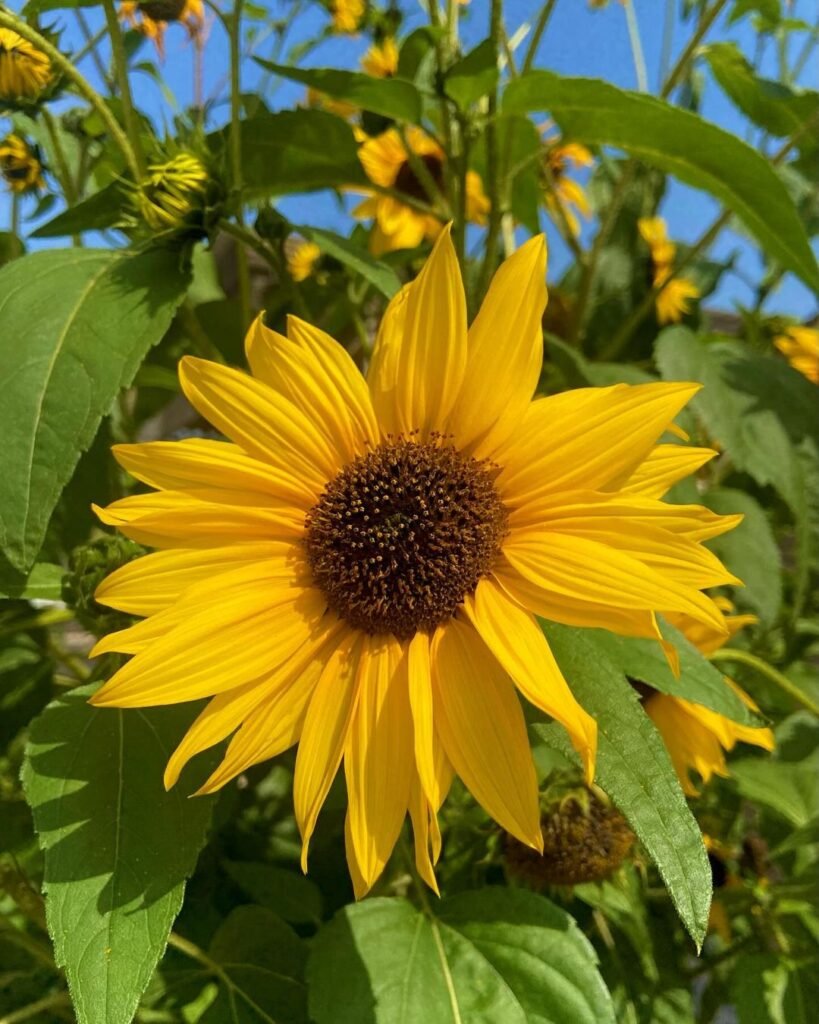
Sunflowers are bright yellow annual plants comprising multiple species within the incredibly large Helianthus genus. Despite their name, most modern hybrid sunflower varieties stem from the single species Helianthus annuus, originating in North and Central America.
Known for their distinct large seed heads comprised of thousands of tiny flowers or “florets”, sunflowers can vary greatly in height, flower size, petal shape and branching patterns depending on variety. Their edible seeds make them a popular crop as well as ornamental flower.
Most sunflower varieties share some universal traits:
- They are heliotropic, meaning their flower heads and stem leaves orient to face the sun over the course of a day.
- They develop one large composite flower head called a capitulum, circled by bright yellow ray petals.
- Their heavy, upright flower heads need support from sturdy, rigid hairy stems and coarse leaves.
- Their seed heads mature into large bristly “sunflower seeds” favored by birds, mammals and humans alike.
With their diversity and edibility, it’s no surprise sunflowers have been cultivated by Native Americans for centuries as an important food crop. Today, sunflowers remain integral to agriculture while also finding widespread popularity among home gardeners.
Popular Sunflower Varieties for Gardens
Whether you’re planning a decorative sunflower patch for cutting fresh flowers or hope to harvest homegrown seeds for baking and bird feed, there are many wonderful annual cultivars to choose from:
Sunbright
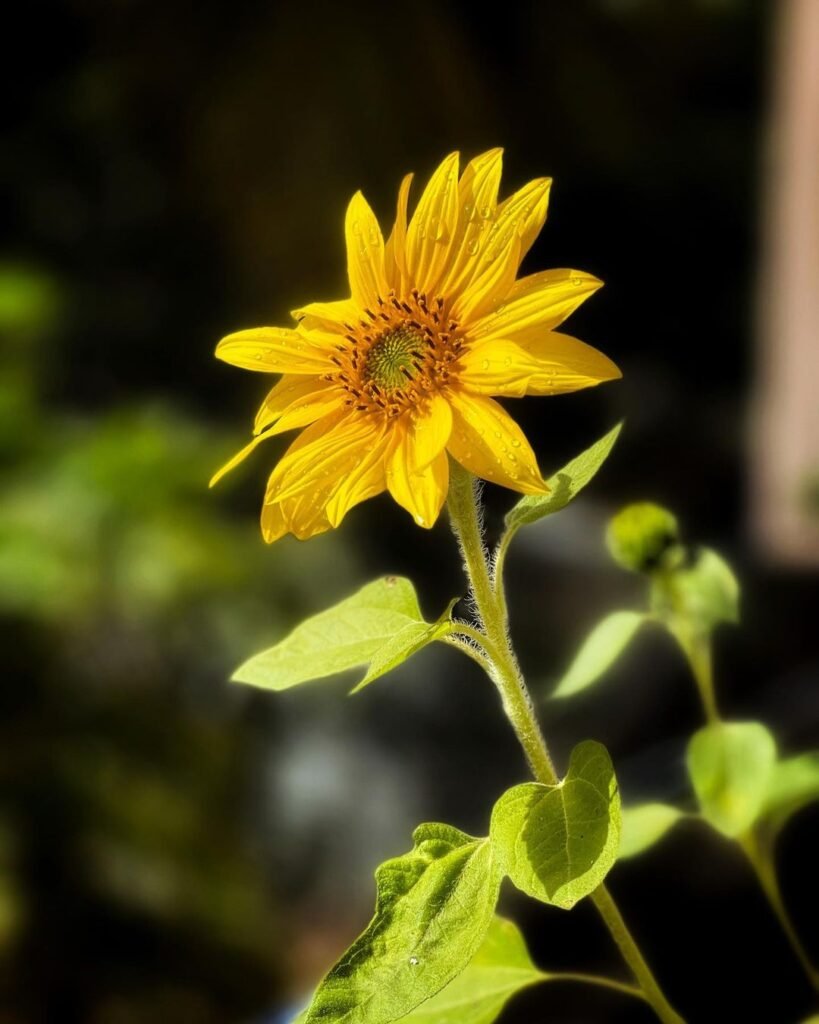
Known as the quintessential single classic sunflower, this reliable variety produces 6″ yellow petals circling green-yellow centers on 5-6 foot plants.
Sunbright Supreme

An improved Sunbright hybrid with more branching, this cultivar offers better production of 6″ flowers over a longer season.
Sunspot
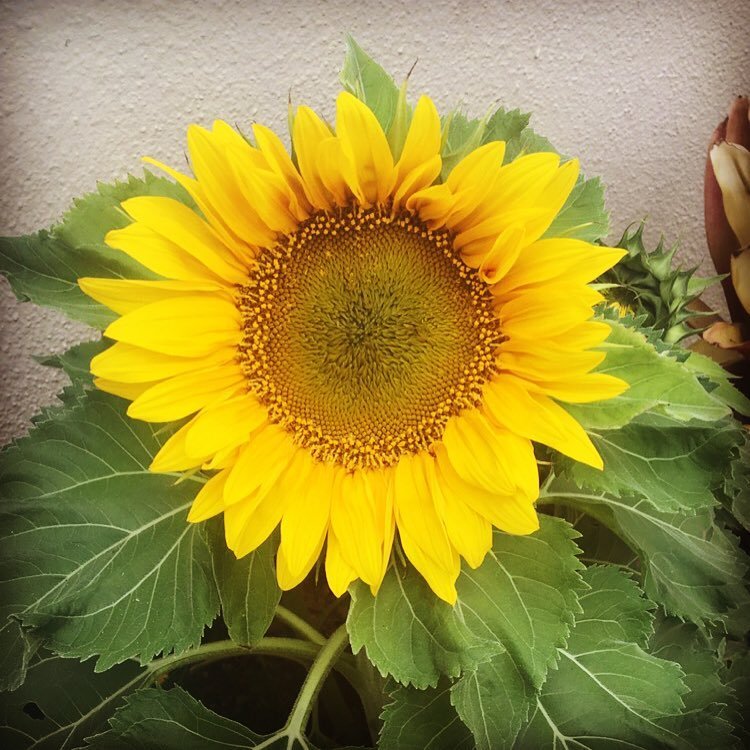
Stunning bicolor sunflowers with burgundy near the center surrounded by bright yellow outer petals create a unique bulls-eye look.
Teddy Bear

Sporting fluffy, fully double blooms up to 6 inches wide, these cute sunflowers have a sweet, plush appearance highly desirable as long-lasting cut flowers.
Sunbuzz
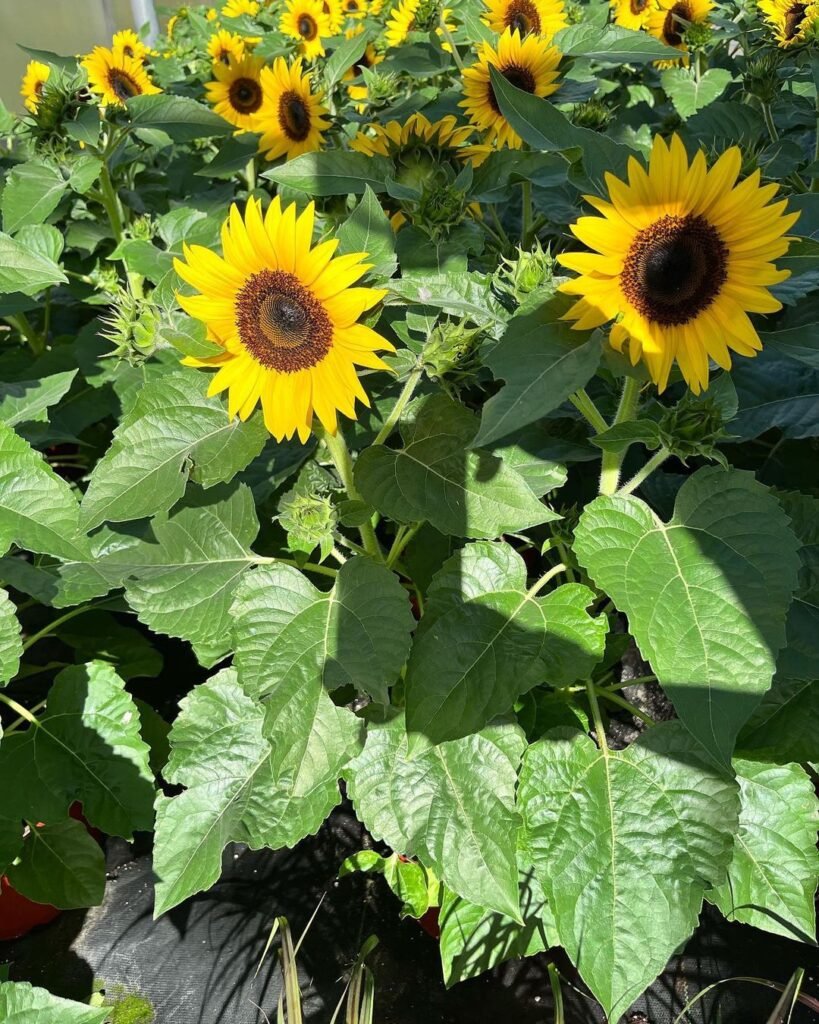
For color contrast, this sunflower variety blooms profusely with 5-6″ mahogany-purple centers ringed by bright gold petals.
Mammoth Grey Stripe
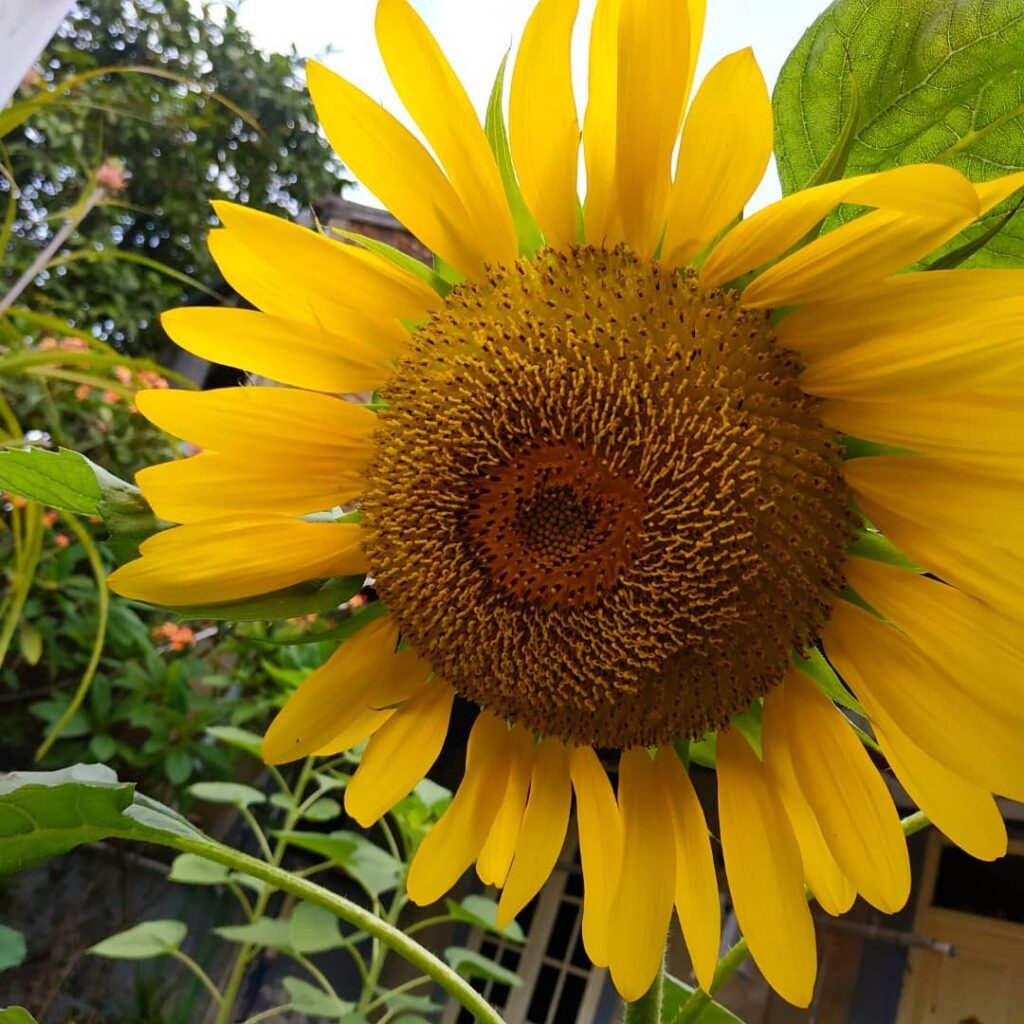
A beloved giant sunflower with 12-14″ dinner plate-sized blooms on towering 10-12 foot stalks! The light-colored striped seeds make this an ideal choice for bird feed.
Skyscraper
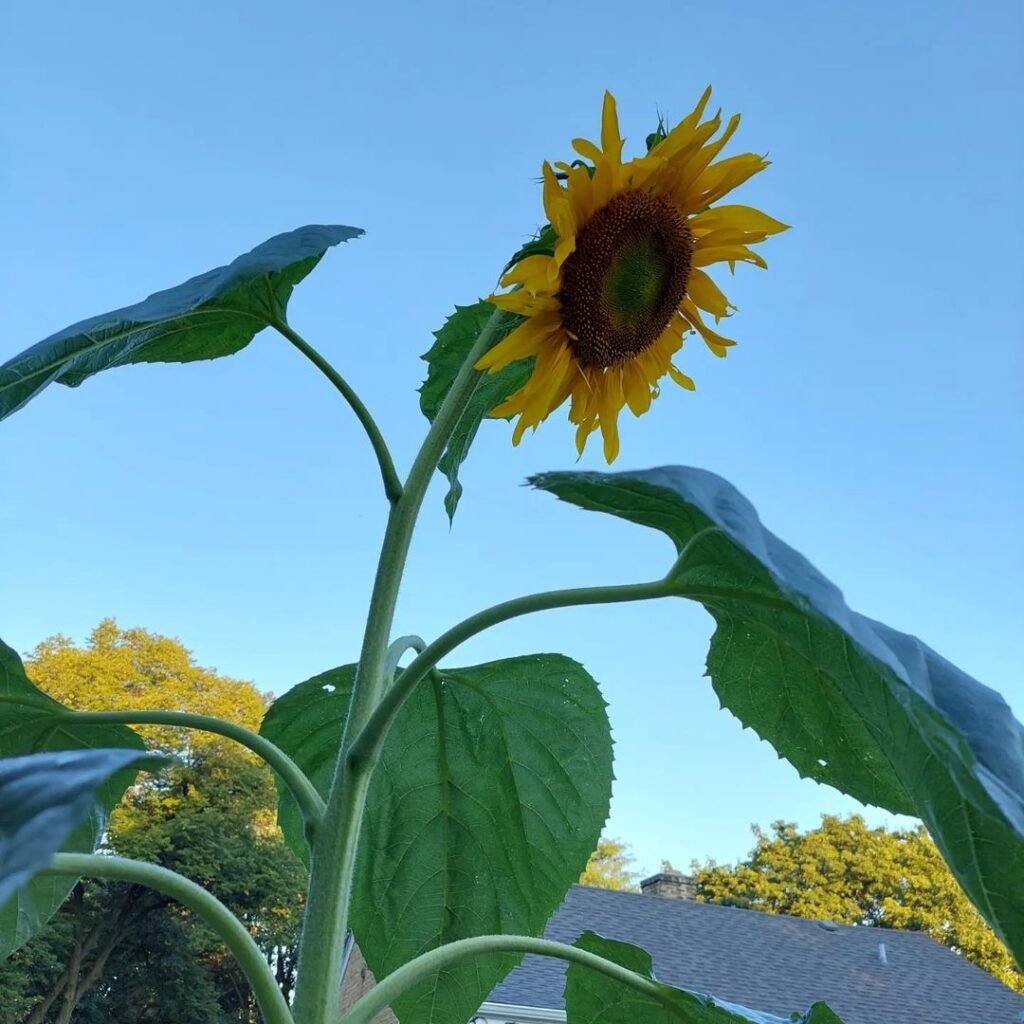
True to its name, this record-setting variety routinely produces enormous 16-24″ sunflower heads atop 14-16′ tall single-stemmed plants.
These represent just a small sampling of the hundreds of sunflower varieties available to home gardeners and commercial growers today. From dwarf 2′ cultivars to towering branched giants, there’s a sunflower to suit every design scheme and garden goal.
Growing Sunflowers: Planting Tips
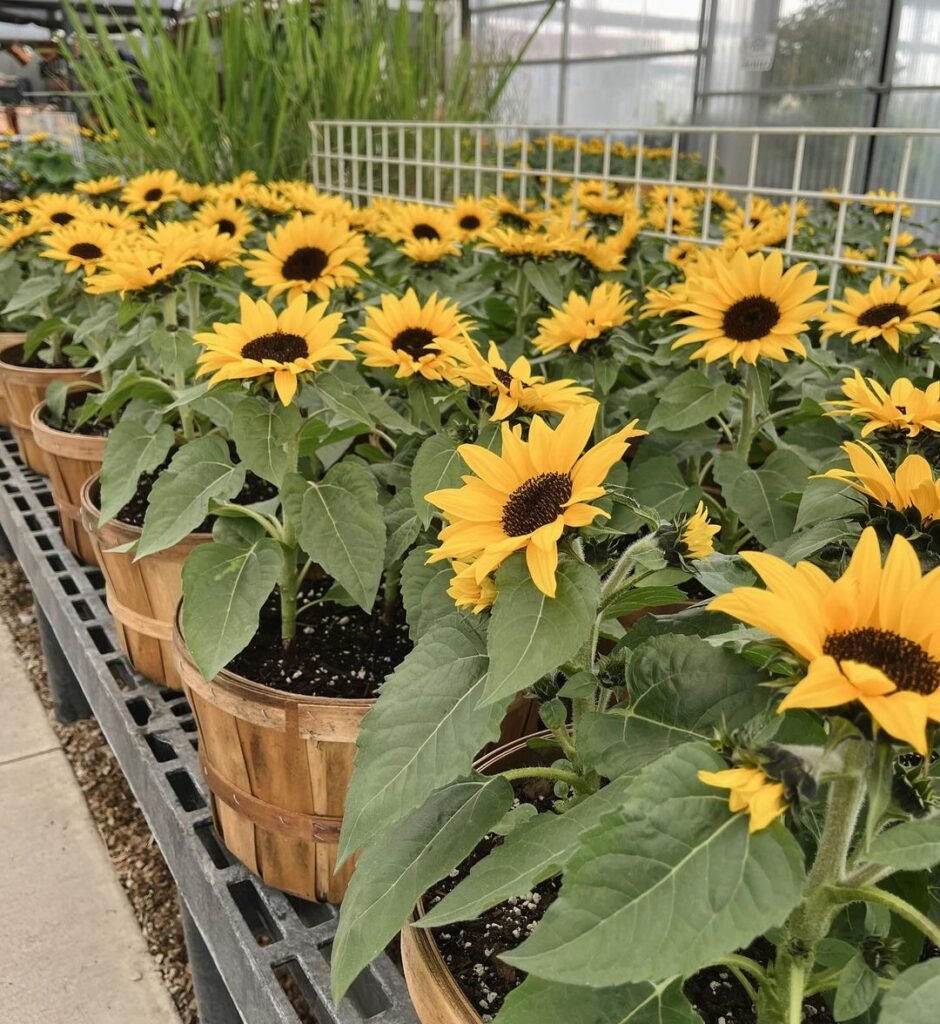
One of the reasons sunflowers are so universally beloved is their ultra-easy culture. These fast-growing annuals thrive in nearly any sunny garden spot with these basic planting tips:
Site Selection
Sunflowers grow best in full direct sun (at least 6-8 hours daily) and nutrient-rich, consistently moist soil. Raised beds or rows with good drainage are ideal.
Sowing Seed
Sow sunflower seeds directly outdoors 1″ deep and 6″ apart after danger of spring frost passes and soil warms Or start seeds indoors 3-4 weeks early for transplanting.
Using Transplants
If started indoors, carefully transplant young sunflower seedlings outdoors as soon as they’re 4-6″ tall, burying stems up to their top leaves.
Spacing
Space traditional sunflower varieties about 12-18″ apart in rows. Dwarf cultivars can be closer at 6-12″ spacing, while branched giants need 2-3 feet between plants.
Planting Schedule
In spring once soil temps are 50°F to 60°F, sow sunflower seeds about 2-3 weeks after your area’s last frost date. Stagger several plantings every 2-3 weeks for continuous blooms.
Support & Protection
Larger sunflower heads often need staking with bamboo canes or wire cages as they develop to prevent flopping. Also add mulch to retain moisture.
With their rapid growth from seed to bloom in as little as 60-90 days, sunflowers are an ideal choice for beginner gardeners or children’s gardens. Plant them in generous groupings for the maximum bright yellow impact.
Caring for Sunflowers in Gardens
Once your sunflower plants are established, they require relatively little care and maintenance beyond the basics:
Watering
Sunflowers demand consistent moisture, requiring about 1″ of water per week during their active growing and flowering periods. Don’t let soil dry out. Drip irrigation works well.
Fertilizing
Feed plants at planting and again when 18″ tall using a balanced or high-phosphorus fertilizer designed for flowering plants to encourage sturdy stems and plentiful blooms.
Mulching
Apply 2-3″ mulch like bark, straw or leaves to suppress weeds and retain soil moisture in summer heat. But leave some bare soil around stems.
Deadheading
For continual blooming, vigilantly deadhead spent sunflowers by removing entire flower heads as soon as their yellow petals brown and die back.
Pest Management
Sunflower pests like aphids can be dislodged by water sprays or insecticidal soap. Seed heads may need protective coverings from hungry birds and squirrels.
Harvesting
Allow some flower heads to fully mature, with petals withering and backs turning yellow. Seeds are ready when the backs turn brown.
End-of-Season
After blooming completes in late summer, leave spent sunflower stalks and flower heads upright over winter for birds and visual interest before removing.
Give sunflowers full sun, fertile soil, steady moisture and protection from pests and they’ll reward you with an abundance of cheerful blooms and edible seeds all summer long.
Sunflowers in Garden Design

With their large size and bold coloring, sunflowers make high-impact focal points that command attention anywhere you plant them. Here are some ideas for incorporating these happy annuals:
Cut Flower Gardens
Plant rows of compact sunflower varieties like ‘Sunbright’ specifically for cutting fresh bouquets. Stagger plantings every 2-3 weeks for steady stem production.
Backdrops & Borders
Use towering mammoth sunflowers as annual backdrops behind perennial beds or along fences and property borders for vibrant pops of sunny color.
Kids’ Gardens
With their fast seed-to-flower cycle, sunflowers are a perfect introduction to gardening for children. Let them watch the flowers’ progression all season.
Bird & Pollinator Plantings
Let some sunflower heads go to seed at the end of the season to provide nourishing food for backyard birds, while the blooms attract bees and butterflies.
Edible Landscapes
Harvest the plump seeds from sturdy branching varieties like ‘Mammoth’ when mature for nutrient-rich snacks, baking or replanting next year’s crop.
Themed Gardens
Create whimsical “Sunflower Houses” by planting thick sunflower patches with walkways and entries cut through them when blooming Or sculpt fun kid-sized mazes.
Cutting Gardens
Many dwarf sunflowers like ‘Sunspot’ and ‘Sunbuzz’ produce beautiful 5″ blooms ideal for mixed bouquets when cut with long, sturdy stems.
No matter how you choose to showcase them, sunflowers always inject gardens with cheerful, carefree radiance that brightens up the sunniest of summer days. What’s more, their iconic blooms are remarkably productive too!
Beyond their arresting beauty, sunflowers are workhorses that produce abundant crops of oil-rich seeds for everything from snack foods and birdseed mixes to biofuels and skin-care products And their tall stalks can even be harvested to produce attractive craft paper or used as mulch and compost.
Pingback: Pruning Tomato Plants: A Comprehensive Guide
Pingback: Finches of Michigan: Exploring the Diverse Species
Pingback: Summer Flower Arrangements: 11 Quick and Easy Ideas
Pingback: How to Grow and Care for Pompom Chrysanthemums: A Complete Guide
Pingback: Teaching Kids About Plants : 10 Simple and Fun Gardening Activities (2024 Guide)